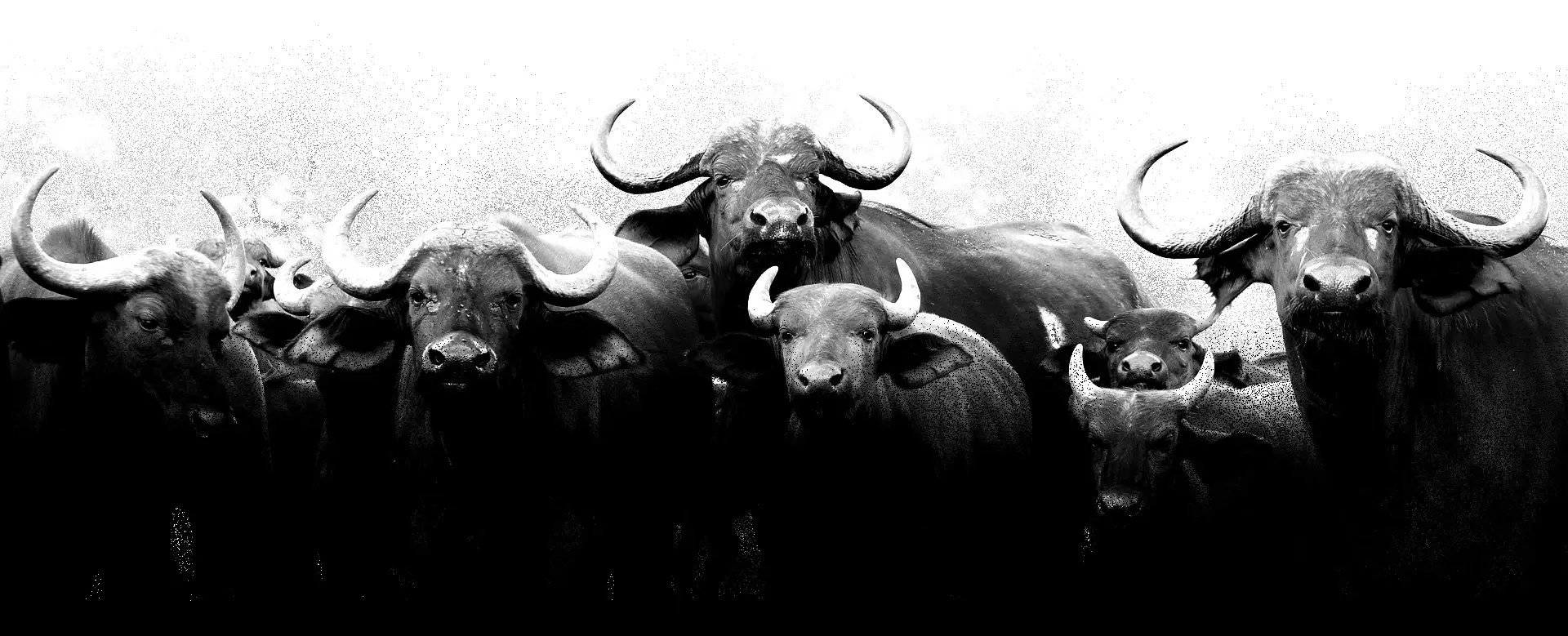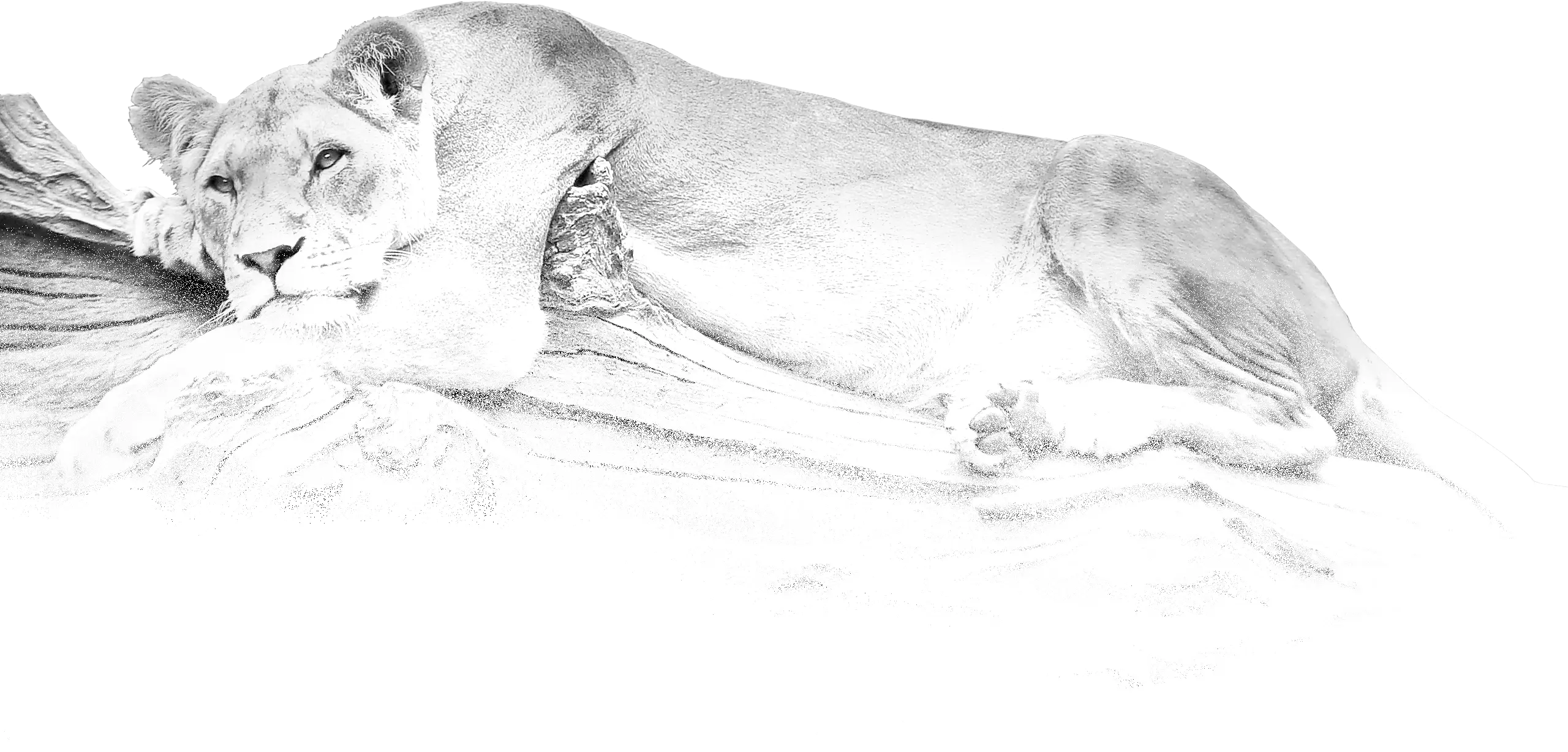
(Viverridae)
Viverrids
Віверові
Viverridae is a family of small to medium-sized feliform mammals, comprising 14 genera with 33 species. Viverrids occur all over Africa, in southern Europe, South and Southeast Asia on both sides of the Wallace Line.
The species of the subfamily Genettinae are known as genets and oyans. The viverrids of the subfamily Viverrinae are commonly called civets; the Paradoxurinae and most Hemigalinae species are called palm civets.
Characteristics
Viverrids have four or five toes on each foot and half-retractile claws. They have six incisors in each jaw and molars with two tubercular grinders behind in the upper jaw, and one in the lower jaw. The tongue is rough with sharp prickles. A pouch or gland occurs beneath the anus, but there is no cecum. The male’s urethral opening is directed backward.
Viverrids are the most primitive of all the families of feliform Carnivora and clearly less specialized than the Felidae. In external characteristics, they are distinguished from the Felidae by the longer muzzle and tuft of facial vibrissae between the lower jaw bones, and by the shorter limbs and the five-toed hind foot with the first digit present. The skull differs by the position of the postpalatine foramina on the maxilla, almost always well in advance of the maxillopalatine suture, and usually about the level of the second premolar; and by the distinct external division of the auditory bulla into its two elements either by a definite groove or, when rarely this is obliterated, by the depression of the tympanic bone in front of the swollen entotympanic. The dental formula is 3/3, 1/1, 3-4/3-4, 1-2/1-2 = 32-40, but the number may be reduced, although never to the same extent as in the Felidae.
Their flesh-shearing carnassial teeth are relatively undeveloped compared to those of other feliform carnivorans. Most viverrid species have a penis bone (a baculum).
Behavior
Most viverrids are nocturnal hunters, feeding on small vertebrates (including carrion), insects, and other invertebrates including worms, crustaceans, and molluscs. Some species are probably strictly carnivorous and have the reputation of fierce and effective predators; others also include fruit and roots in their diets. Sightings of most species usually involve one or at most two individuals; viverrids generally do not associate in larger groups. They are found mainly in forests, thickets, and tall grass. They are active at night and hide during the day in tree hollows, caves, or, less commonly, in burrows—usually ones abandoned by other animals. Most are strongly arboreal, but a few species seldom climb. The Otter Civet is semi-aquatic. One, the binturong, has a prehensile tail. Their senses of sight, smell, and hearing are all well developed.
While this is a large group with many species, the habits of a surprising number are poorly known.
Reproduction
Most species do not exhibit seasonality in reproduction. Gestation lasts between 60 and 81 days, and litters typically consist of 1 to 6 blind but furred cubs. Some species can have two pregnancies per year. The lifespan of weaver species is 5–15 years.

(Genetta genetta)
Genetta Genetta
Генета звичайна
It is widely distributed north of the Sahara, in savanna zones south of the Sahara to southern Africa and along the coast of Arabia, Yemen and Oman. It was introduced to south-western Europe.
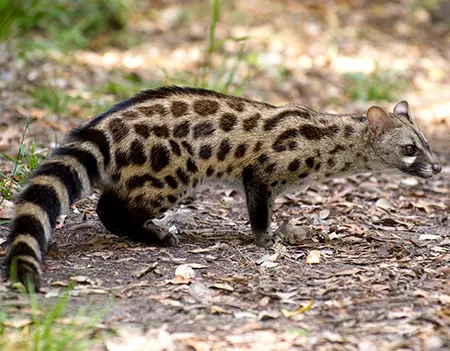
(Genetta tigrina)
Cape Genet
Генета тигрова
It is found in South Africa, where it is distributed from the Western Cape to KwaZulu-Natal, south of 32°S, and up to the Lesotho border. It lives in moist environments near streams, rivers and standing water, in lowland and mountain fynbos, where vegetation cover is high.
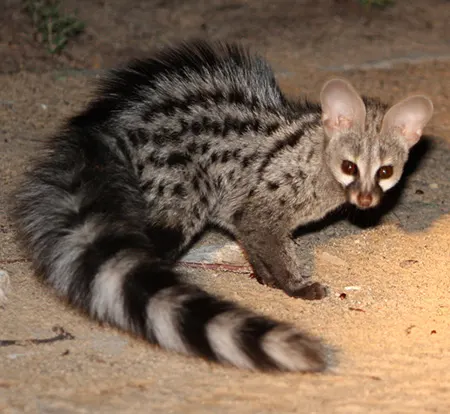
(Genetta felina)
Southern Small-spotted Genet
Генета кішкоподібна
It is found in South Africa, Angola, Botswana, Namibia and Zambia. It lives in woodland savanna, grassland, thickets, and dry vlei areas that border deserts.

(Genetta maculata)
Rusty-spotted Genet
Генета плямисто-руда
It is widely distributed in sub-Saharan Africa, ranging from north and east of the Volta River, eastward to Eritrea and Somalia, and southward to central Namibia and the KwaZulu-Natal province of South Africa. It occurs at elevations of 280–1,470 m.
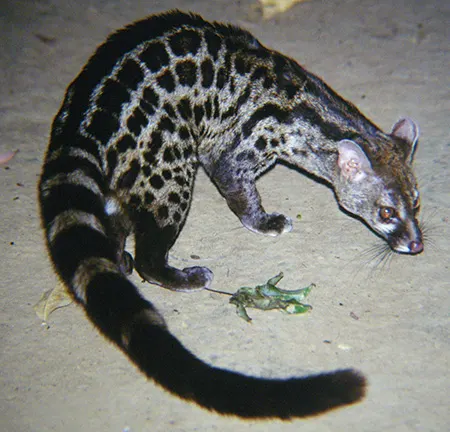
(Genetta pardina)
Pardine Genet
Генета леопардова
It is found in western Africa, from Senegal eastwards to Ghana, where the Volta River is possibly a barrier to dispersal. They live in rainforests, gallery forests, moist woodlands, but also in plantations. They also venture into suburbs.
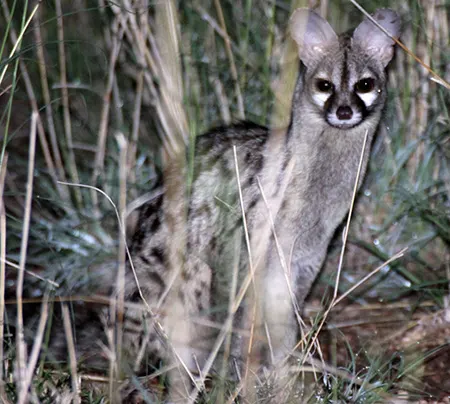
(Genetta abyssinica)
Abyssinian genet
Генета абіссинська
It is found in Ethiopia, Eritrea, Somalia, Sudan, and Djibouti. It inhabits coastal plains, Afromontane grasslands, and mountain moorlands at elevations of up to 3,750 m.
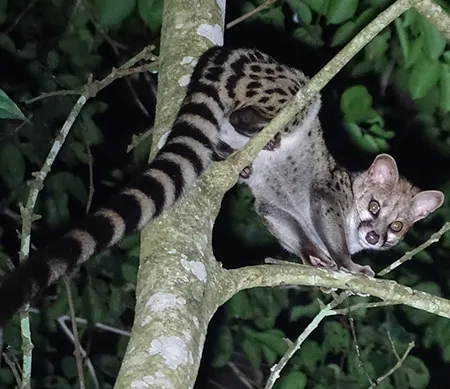
(Genetta servalina)
Servaline Genet
Генета сервалова
It is found in Central Africa, from the Sanaga River in Cameroon southwards to the Congo Basin and eastwards to Uganda and Tanzania.
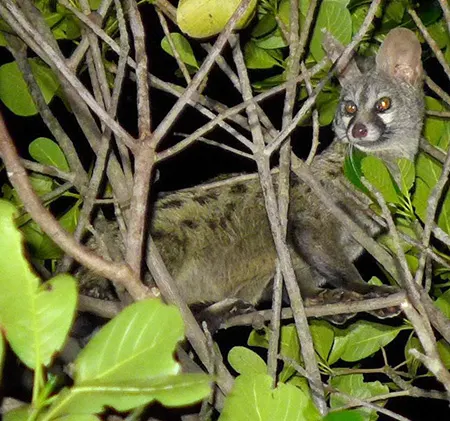
(Genetta angolensis)
Angolan Genet
Генета ангольська
It occurs in Angola, Democratic Republic of the Congo, Malawi, Mozambique, Tanzania, Zambia and Zimbabwe. It lives in a variety of environments in its range, including both the local miombo woodlands and plains.
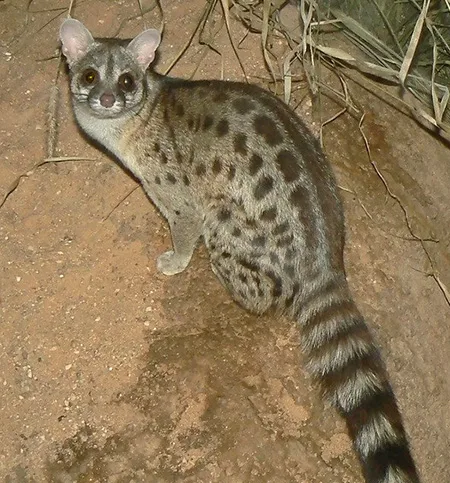
(Genetta thierryi)
Hausa Genet
Генета Хауса
It is found in Gambia, Guinea-Bissau and Cameroon, where it inhabits moist and dry savannas with open woodlands. It has also been sighted in dry wooded steppes in Senegal, and in rainforest in Sierra Leone, Ghana and Côte d’Ivoire.
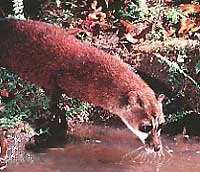
(Genetta piscivora)
Aquatic Genet
Генета водна
It has only been recorded in rainforest east of the Congo River and in the Tshopo District at elevations from 460–1,500 m. It is found in dense equatorial forests, typically along streams.

(Genetta johnstoni)
Johnston's Genet
Генета Джонстона
It is found in the rainforests of western Africa, including Guinea, Sierra Leone, Liberia, Côte d’Ivoire, and Ghana.
The genus (Genetta) also includes: King genet (Genetta poensis), Giant Genet (Genetta victoriae), Crested Genet (Genetta cristata), Bourlon’s Genet (Genetta bourloni).

(Poiana richardsonii)
Central African Oyan
Лінзанг центральноафриканський
It is endemic to Cameroon, Equatorial Guinea, Gabon, the Central African Republic, the Republic of the Congo, and the Democratic Republic of the Congo east to the Albertine Rift. It lives in lowland and montane tropical rainforests.
The genus (Poiana) also includes: West African Oyan (Poiana leightoni).
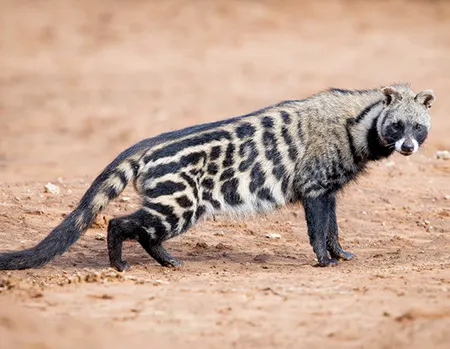
(Civettictis civetta)
African Civet
Цивета африканська
It is widely distributed from sub-Saharan Africa to northern Namibia, northern and eastern Botswana, and north-eastern South Africa. It often inhabits savannahs, forests, and sometimes near rivers as the tall grasses and thickets.

(Viverra tangalunga)
Malayan Civet
Вівера малайська
It is native to the Malay Peninsula and the islands of Sumatra, Bangka, Borneo, the Riau Archipelago, and the Philippines. It inhabits a wide variety of habitats including forests, secondary habitats, cultivated land and the outskirts of villages.

(Viverra megaspila)
Large-spotted Civet
Вівера плямиста
It occurs in Myanmar, Thailand, Malaysia, Cambodia, Laos, Vietnam and southern China. It inhabits evergreen, deciduous, and dry dipterocarp forests below elevations of 300 m.
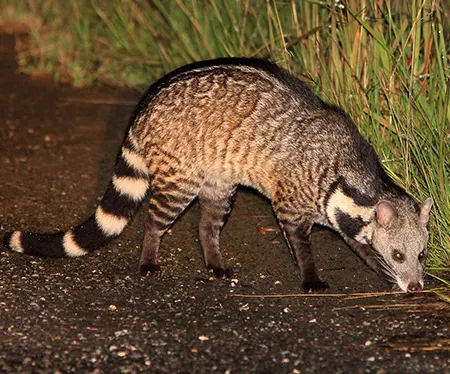
(Viverra zibetha)
Large Indian Civet
Вівера індійська
It ranges from Nepal, northeast India, Bhutan, Bangladesh to Myanmar, Thailand, the Malay Peninsula and Singapore to Cambodia, Laos, Vietnam and China. It occurs at elevations up to 1,600 m.
The genus (Viverra) also includes: Malabar Large-spotted Civet (Viverra civettina).

(Viverricula indica)
Small Indian Civet
Цівета мала
It is found throughout most of India and Sri Lanka, extending eastward to southern and central China and Taiwan, and southward to Peninsular Malaysia, Java, Sumatra, and Bali. It inhabits semi-evergreen, deciduous, and mixed deciduous forests, as well as bamboo and shrub forests at altitudes up to 1,200 m.
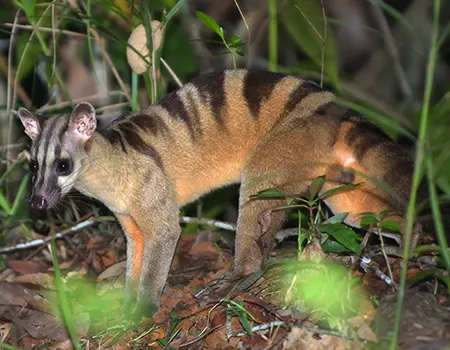
(Hemigalus derbyanus)
Banded Palm Civet
Цівета смугаста
It is native to Myanmar, Thailand, Peninsular Malaysia, Sumatra, the Mentawai Islands and Borneo from sea level up to an elevation of 1,660 m. It lives in primary lowland moist forests, as well as in disturbed habitats, peat bog forests, and acacia plantations.
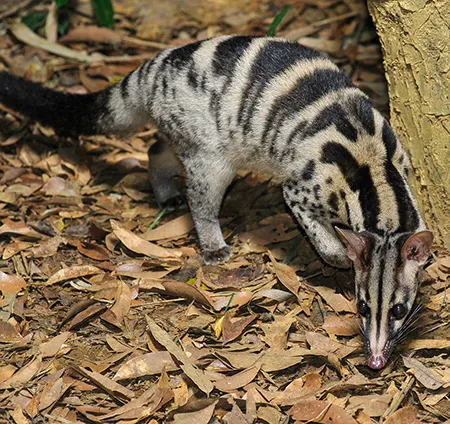
(Chrotogale owstoni)
Owston's Palm Civet
Пальмова цивета Оустона
It lives in lowland evergreen forests where dry seasons are not too harsh. They live in a restricted range of territory, spanning Vietnam, Laos and a very small portion of southern China, as well as the Annamite mountains.
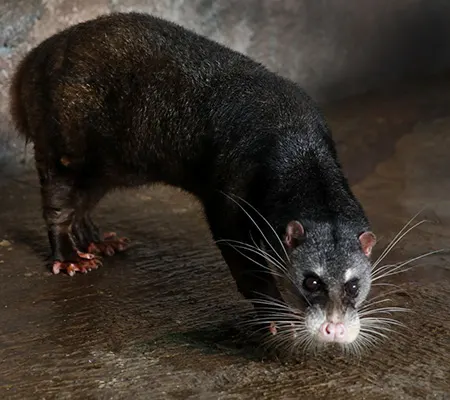
(Cynogale bennettii)
Otter Civet
Цівета видрова
It is found in southern Myanmar, southern Thailand, Peninsular Malaysia, as well as on Sumatra and Borneo. It lives in lowland primary forest and is also known to occur in secondary forest.

(Diplogale hosei)
Hose's Palm Civet
Цівета Хосе
It has been recorded in a few localities in Sarawak and Sabah in Malaysian Borneo, and in Brunei. It mainly occurs in lower montane forest and mature mixed dipterocarp forest at elevations of 450–1,700 m.

(Macrogalidia musschenbroekii)
Sulawesi Palm Civet
Сулавеська пальмова цівета
It is endemic to Sulawesi. It is recorded in lowland forest, lower and upper montane forest at elevations up to 2,600 m, grasslands and near farms.
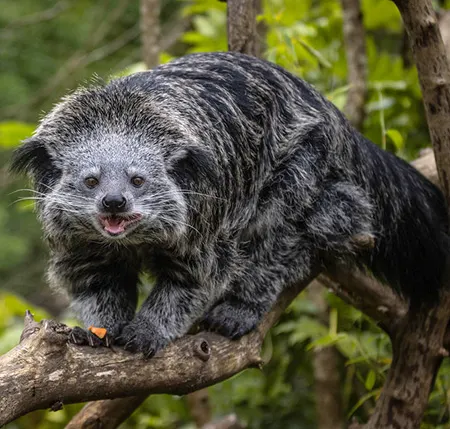
(Arctictis binturong)
Binturong
Бінтуронг
It occurs from India, Nepal, Bangladesh, Bhutan, Myanmar, Thailand and Malaysia to Laos, Cambodia, Vietnam and Yunnan in China, Sumatra, Kalimantan and Java in Indonesia, to Palawan in the Philippines. It lives in tall forest at elevations up to 2,600 m.

(Paguma larvata)
Masked Palm Civet
Цівета гімалайська
It is distributed from Pakistan to China, Borneo, Sumatra, Taiwan, and the Andaman and Nicobar islands. It occurs at elevations up to 2,500 m.

(Arctogalidia trivirgata)
Small-toothed Palm Civet
Дрібнозуба пальмова цівета
It is native to dense forests of Southeast Asia and some of the easternmost parts of South Asia (Northeast India), from the Assam state of India to Indochina, Malay Peninsula, and Singapore, and on Sumatra, Bangka, Java, Borneo, and numerous small nearby islands of Indonesia.
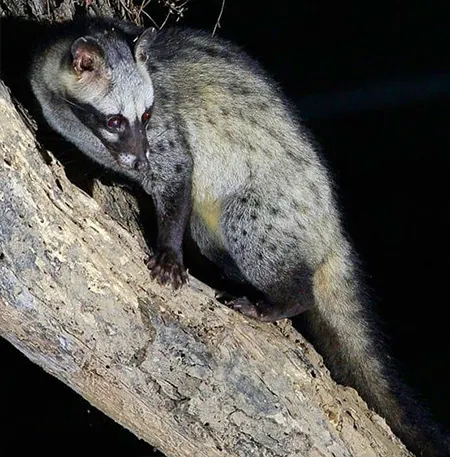
(Paradoxurus hermaphroditus)
Asian Palm Civet
Мусанг азійський
It is widely distributed in South and Southeast Asia, ranging in Pakistan, India, Nepal, Bangladesh, Bhutan, Myanmar, southern China, northern Vietnam, northern Laos, and northern Thailand. It usually inhabits primary forests, but also occurs at lower densities in secondary and selectively logged forest.
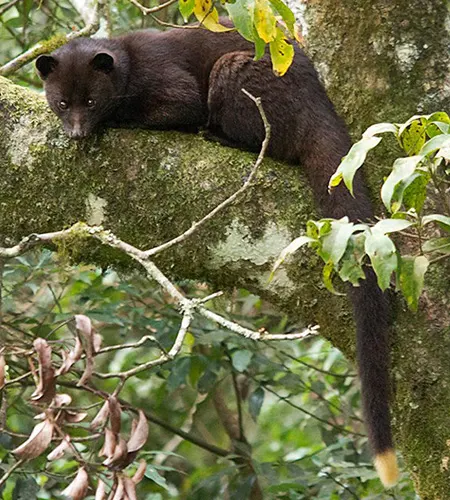
(Paradoxurus jerdoni)
Brown palm civet
Мусанг коричневий
It is found in India, from Castle Rock in Goa to the southern tip of the Western Ghats in Kalakkad Mundanthurai Tiger Reserve. It inhabits rainforest at elevation of 500–1,300 m.
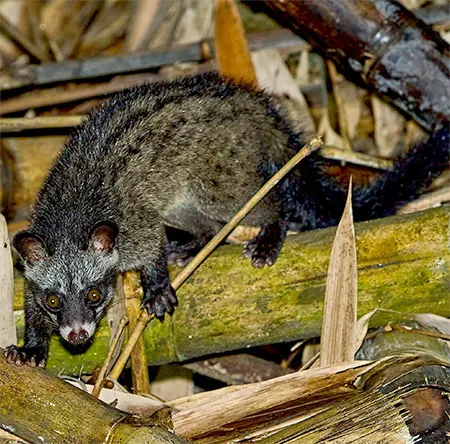
(Paradoxurus musangus)
Southeast Asian Palm Civet
Мусанг південний
It is found in southern Vietnam, southern Laos, Cambodia, southern Thailand, the Malay Peninsula, and on the islands of Sumatra and Java.

(Paradoxurus philippinensis)
Philippine Palm Civet
Мусанг філіппінський
It is found on the Mentawai Islands (Siberut, North Pagai, South Pagai), Borneo, and the Philippines.
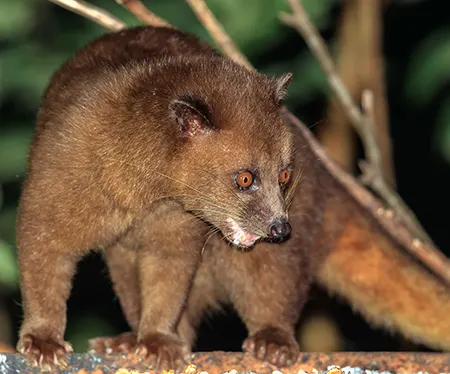
(Paradoxurus zeylonensis)
Golden Palm Civet
Мусанг золотистий
It is endemic to Sri Lanka. It inhabits lowland rain forest, montane evergreen forests, and also dense monsoon forest.
